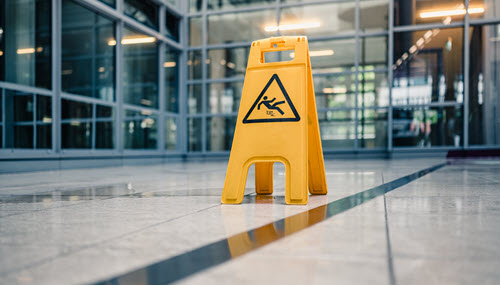
Slips, trips and falls remain a leading workers’ compensation loss driver in almost every industry.
According to U.S. Bureau of Labor Statistics data, falls caused 880 work fatalities in 2019 — up 11% from the year prior and the number two cause of fatalities — and resulted in 244,000 non-fatal injuries.
Falls can be a persistent problem in workers’ compensation programs. Many falls — such as those caused by uneven surfaces, spills or trip hazards — are preventable. Organizations need to have a comprehensive, well-executed fall prevention program as an integral part of their risk management strategy. Key steps should include:
- Auditing walking and working surfaces to determine that the coefficient of friction meets or exceeds Americans with Disabilities Act requirements
- Mandating slip-resistant footwear for appropriate staff
- Establishing good housekeeping and work practice controls
- Having a snow-ice-liquid mitigation program with effective protocols
While many of these practices have been in place for over 20 years, best-in-class workplaces have enhanced them. We recommend that risk managers look at these potential improvements to their fall programs:
Embrace technology.
Replace pen-and-paper audit trails with slip-and-fall prevention software that electronically records walkthroughs with time-and-date-stamped photos showing proof of inspection.
Get leadership buy-in.
If your employees know your leaders will hold them accountable to prevent falls, it has a huge impact on the bottom line.
Pay attention to details.
Having a snow-ice-liquid policy that requires the use of mats at entrances is good. Even better is a policy that determines the proper length those mats need to be to ensure footwear is dry once workers transition from mat to floor.
Watch for employee follow-through.
For example, watch how long it takes for employees to clean up spills and provide extra education as needed.
Consider COVID-19 impacts.
With fewer people in the workplace — and many workplaces closed — several industries observed fewer same-level fall claims in 2020. As workplaces return to normal traffic, expect more activity and increased fall risk. More education may be needed, especially in industries with new employees.
Optimizing your workers’ compensation program requires revisiting loss drivers with a fresh set of eyes and energizing solutions. By doing so, you can have a substantial and positive impact on your employees and your organization’s bottom line.
Originally published in August 2021 edition of Risk & Insurance magazine.




